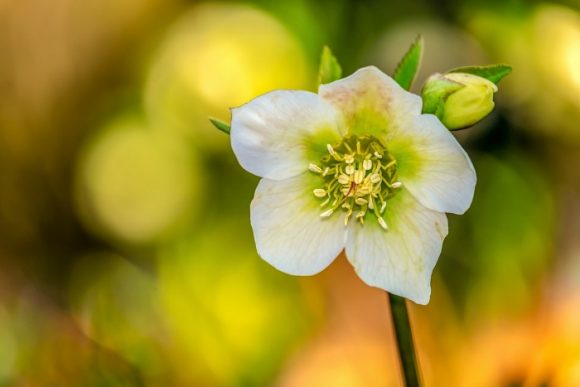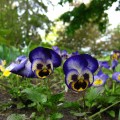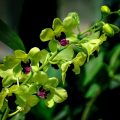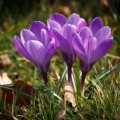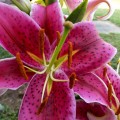- Geraniums: Two Floral Families with Striking Flowers - December 15, 2019
- Festive Flowers for a Dazzling Winter Bouquet or Centerpiece - December 14, 2019
- Forcing Flower Bulbs For the Holiday Season - December 13, 2019
Helleborus makes a thoughtful gift to a loved one’s garden by providing color in winter and early spring. Usually found in shades of pinks and purples, their shape resembles a wild rose. However, helleborus is actually a member of the buttercup family Ranunculaceae.
With over two thousand years of folklore, the hellebore flower tells many captivating stories. Most recently, it is known as a herald of spring, as it is one of the first to bloom in the garden. Some types even bloom in December and January when many gardens are otherwise dormant.
Helleborus niger is often called the Christmas Rose. Legend has it that the flower sprouted from the tears of a young girl who wanted to bring baby Jesus a gift. Helleborus orientalis is known as the Lenten Rose as it blooms in early spring in many areas, around the season of Lent. The Lenten Rose is well suited to warmer climates where other varieties do not grow as well.
Different parts of the hellebore plant have been used in a variety of medicinal treatments for nearly two millennia, but have since been discovered to be toxic in all but the smallest of doses. Be careful if you have curious children or furry friends, as ingestion can cause illness.
There have been numerous myths and legends surrounding helleborus since the time of the ancient Greeks. Pliny the Elder advised facing toward the east and saying a prayer before digging up a hellebore plant. This may stem from the fact that these plants do not like to be moved once established. According to medieval folklore, walking on powdered hellebore root would result in invisibility of the person stepping on it. It is not clear how this story began, but years of experience seem to indicate that it is probably not true!
Considered relatively low maintenance once planted, hellebore tolerates a good deal of shade and many varieties are easy to grow in a range of gardening conditions. They are also resistant to being eaten by deer and other hungry visitors to the garden.
Helleborus will make a considerate gift because they require little attention once planted. They provide lovely blooms when the weather may be dreary, and they give the gardener something to look forward to early in the growing season. If you’re looking for a flower steeped in mystery and tradition, helleborus is a fine choice.
